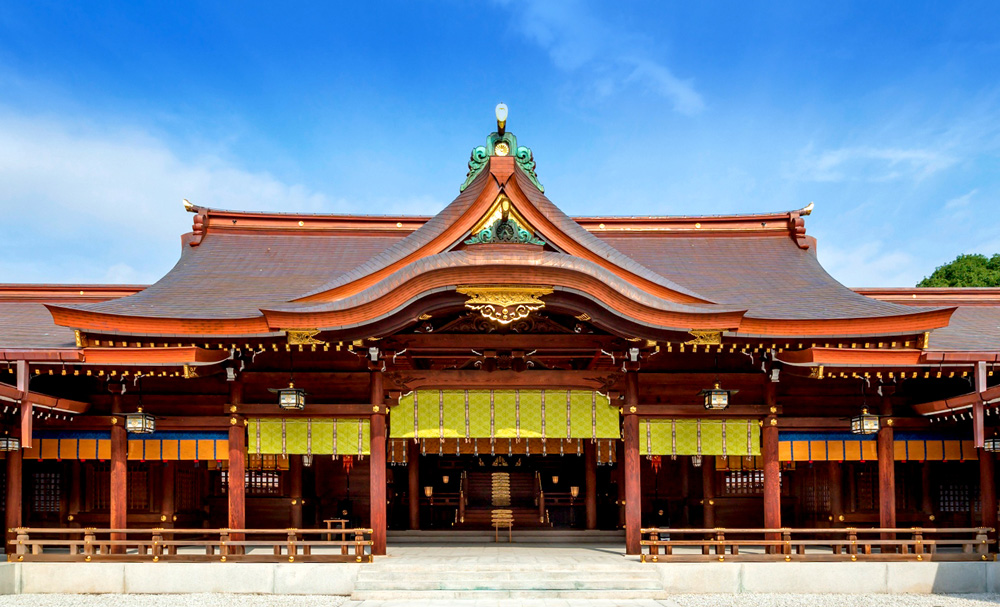Introduction
Meiji Shrine (明治神宮, Meiji Jingū) is one of Tokyo’s most iconic Shinto shrines, dedicated to the deified spirits of Emperor Meiji and Empress Shoken. Located adjacent to the bustling Harajuku Station, this tranquil forest offers visitors a serene escape from the city’s hustle and bustle. As a symbol of Japan’s modernization, Meiji Shrine is not only a significant historical site but also an excellent place to experience traditional Japanese culture.
Key Information
- Location: 1-1 Yoyogikamizonocho, Shibuya City, Tokyo
- Established: 1920
- Main features: Massive torii gates, peaceful forest, traditional shrine buildings
- Annual visitors: Over 10 million
- New Year’s visitors: Over 3 million (highest in Japan)
Historical Background
Meiji Shrine was completed in 1920, dedicated to Emperor Meiji (1852-1912) and Empress Shoken (1849-1914). Emperor Meiji was a key figure in Japan’s modernization, overseeing the country’s transition from a feudal society to a modern nation-state. The shrine was destroyed during World War II but quickly rebuilt afterward. Today, Meiji Shrine stands as both an important religious site and a reflection of Japan’s history and culture.
Main Attractions
Massive Torii Gates
The iconic entrance to the shrine, made from 1700-year-old Japanese cypress wood, stands 12 meters tall and is one of the largest wooden torii gates in Japan.
Main Shrine Complex
The core of the shrine, built in traditional Shinto architectural style, exudes a solemn atmosphere. Visitors can pray, draw fortunes, or purchase amulets here.
Meiji Jingu Museum
Newly opened in 2019, designed by renowned architect Kengo Kuma. It exhibits personal belongings of Emperor Meiji and Empress Shoken, including the carriage used by the emperor to proclaim the Meiji Constitution.
Inner Garden
Requires a separate entrance fee, known for its natural beauty. Particularly stunning in mid-June when irises bloom. The garden’s Kiyomasa’s Well is a famous “power spot.”
Best Time to Visit
- Year-round, with spring and autumn offering the most pleasant weather
- New Year’s period for Japan’s largest hatsumode (first shrine visit of the year)
- Mid-June to see the iris blooms in the Inner Garden
- Weekends to witness traditional Japanese weddings
Getting There
- 1-minute walk from Harajuku Station on the JR Yamanote Line
- 1-minute walk from Meiji-jingumae Station on the Tokyo Metro Chiyoda and Fukutoshin Lines
- About 10 minutes walk from Harajuku Station to the main shrine buildings
Hours and Admission
- Shrine hours: Sunrise to sunset
- Open year-round
- Shrine admission: Free
- Meiji Jingu Museum: 10:00-16:30 (last entry 16:00), 1000 yen
- Inner Garden: 9:00-16:30 (closes at 16:00 from November to February), 500 yen
Visitor Tips
- Wear comfortable walking shoes as the shrine grounds are extensive
- Purify yourself at the entrance by washing your hands and mouth
- Follow Shinto etiquette when praying: bow twice, clap twice, then bow once more
- Avoid taking photos in front of the main hall
- Purchase unique omamori (amulets) as souvenirs
- Allow at least 2-3 hours for your visit
Official Website
Conclusion
Meiji Shrine is an unmissable cultural landmark in Tokyo. It’s not only a testament to Japan’s modernization but also an ideal place to experience traditional culture and find inner peace. Whether you’re a history enthusiast, a cultural explorer, or simply seeking tranquility in the bustling city, Meiji Shrine is worth a dedicated visit. Step into this urban forest, feel the glory of the Meiji era, and listen to the whispers of century-old trees – it will undoubtedly add an unforgettable chapter to your Tokyo journey.
